Rain Photography Tips: Capturing Stunning Shots in the Rain
Rain can transform the ordinary into something poetic: the streets are glistening, colors are getting darker, and moods change. Rain photography captures this fleeting magic, turning everyday scenes into captivating moments. However, though it is magical to take photos in the rain, it needs a correct method and equipment as well.
Whether you're experimenting with creative rain photography ideas or perfecting your portrait photography in rain, tools like HitPaw FotorPea Photo Enhancer can elevate your shots post-editing, ensuring every drop and reflection tells a story.
What is Rain Photography?
Rain photography is the art of capturing the beauty, drama, and atmosphere created by rainfall. Rain has a transformative visual effect, whether it is seen in puddles or foggy downtown. It confronts the photographer to accept the unpredictability as they play with light, water, and even temperament.
As much as you are shooting city streets, intimate portraits, or more expansive landscapes, the rain will give an added touch that any other weather condition can hardly achieve. Unlike standard photography, tips for photographing in rainy weather involve mastering both technical and creative skills.
Essential Gear for Rain Photography
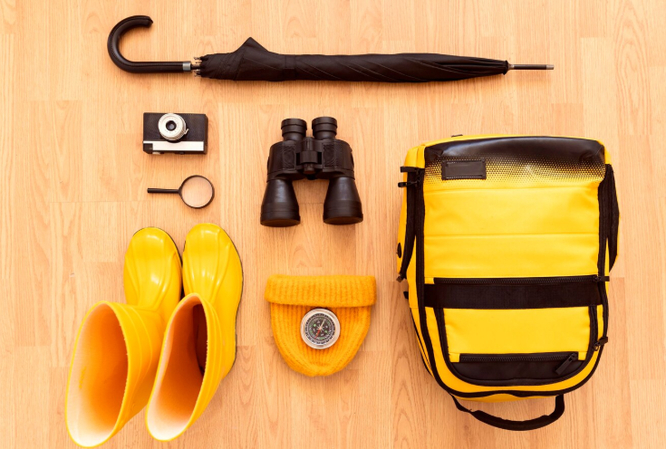
Weather-Sealed Cameras and Lenses
Choosing the best camera for rain photography starts with durability. Another thing money can buy is a DSLR or a mirrorless camera with a sealed body, which will protect the internal parts of the camera against moisture.
Good brands include Canon, Nikon, Sony, and Fujifilm. A 35mm or 50mm prime lens is ideal for rainy day street photography, offering excellent light performance and depth. To maintain extra safety, put rubber gaskets on lenses.
Waterproofing Accessories
Rain Covers for Camera and Lens
A transparent rain cover does not obstruct your viewfinder or display, and still does not expose your equipment. Seek designs with controls that modifications can access.
Lens Hood for Raindrop Protection
Will assist in protecting your lens against direct drops and light flare, notably when you are pointing the camera upwards or taking pictures in the wind during rain.
Microfiber Cloths for Quick Cleaning
You should always carry a couple of cleaning lenses or viewfinders in your pockets to clean lenses or viewfinders between shots.
Supporting Equipment
Tripod with Rubber Grips
A tripod will provide good support on wet terrain and is required for long exposure shots or rain streaking pictures.
UV Filter to Protect Lens
A shield against the water marks and scratches, it is transparent and more straightforward to clean compared to the lens itself.
Plastic Bags or Towels for Quick Coverage
This is perfect to protect gear when changing locations, or when it rains hard.
Camera Settings for Rain Photography

Shutter Speed and Aperture
Fast Shutter (1/250 or More)
Freezes the drop by drop, which is convenient in dramatic shots.
Slow Shutter (1/30)
A streaking rainy effect. To avoid camera shake, use a tripod.
Aperture Choices
Use f/1.8 for portrait photography in the rain to blur the background beautifully. On broader perspectives, such as streets of the city or nature, use f/8 to get depth.
ISO and White Balance
Adjust ISO for Low Light
When it is raining, the weather becomes darker. ISO 400-1600 can be required based on the environment.
Use Cloudy or Custom White Balance
Prevents colors from appearing too blue or washed out during cloudy weather.
Manual vs Auto Focus in the Rain
Rain May Confuse Autofocus
At least in a low-light or fog. Manual focus offers better control when autofocus struggles in rain or fog.
Composition Tips for Rain Photography
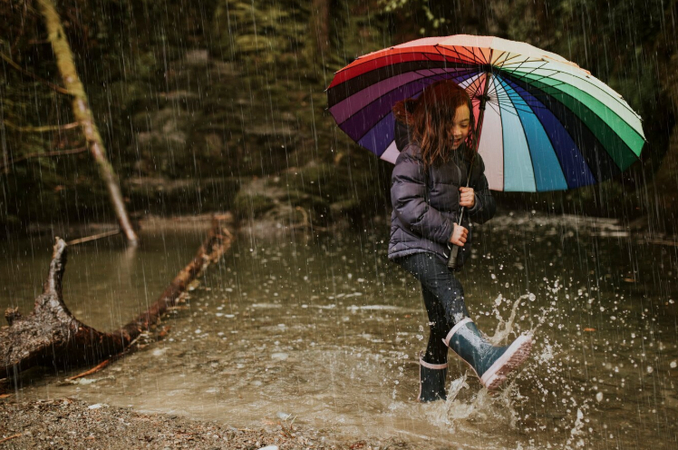
Use Reflections and Puddles
Capture Mirror Effects and Symmetry
Moist surfaces can reflect urban lights, umbrellas, or people--ideal settings to make artistic compositions.
Shoot at Low Angles for Drama
Sit or have your camera close to the ground to get the reflections on puddles or a wonky perspective. Knowing how to take pictures in the rain with reflections elevates your visual storytelling.
Include Human Elements
Umbrellas, Raincoats, and Expressions
Put in reality and feeling. Shoot spontaneous expressions or artificial pictures.
Add Scale and Context
The rainy city can add perspective and context to your photo by showing an individual in it.
Enhance Mood with Backlighting
Shoot Toward Light Sources
Raindrops, when backlit by streetlights or by car lights, can be beautiful.
Use Neon Signs or Lamps
These add vibrant pops of color and atmosphere, ideal for creative rain photography ideas.
Types of Rain Photography
Street Photography in the Rain
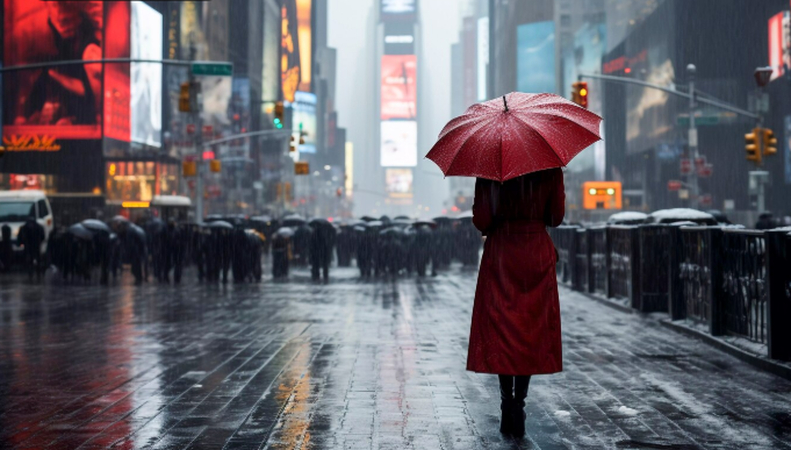
Capture City Life, Lights, and Movement
The combination of movement, expressions, and reflections helps convey true urban stories. Knowing rainy day street photography tips will help navigate timing and angles.
Utilize Leading Lines with Wet Pavements
Lead the eye of the viewer with the help of roads, crosswalks, and puddles.
Portraits in the Rain
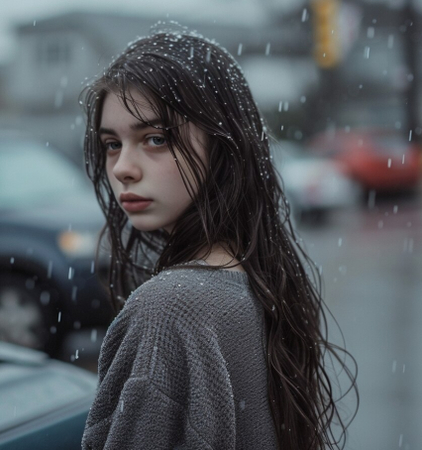
Use Soft Backlighting, Shallow DOF
Raindrops look magical when they are backlit. Combine. If you can use wide apertures, you can use f/1.8.
Emotional Themes and Storytelling
Rain brings with it intense emotions, ideal for telling a story in portraits, mood, loneliness, and romance.
Landscape Rain Photography
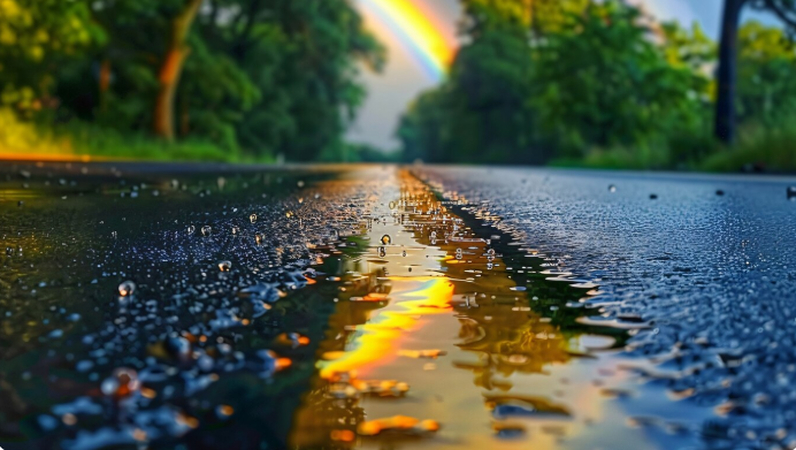
Cloud Drama, Mist, and Light
Atmospheric scenes are self-evident in foggy forests, storming skies, and muted colors.
Use Polarizers to Cut Glare
Amplify the difference in brightness and limit the moisture-shine of the surfaces.
Common Challenges in Rain Photography (and How to Overcome Them)
Lens Fog and Water Spots
Lens fog and water spots can obscure your view. Let your gear acclimate and keep cleaning cloths ready. It is hard to see through the lens when it is fogged with water.
Prior to starting, make sure your gear acclimatizes once you have lens cloths readily available for use, and cover hoods or lenses.
Slippery Surfaces and Equipment Safety
Make sure you wear boots with no slip and make use of tripods with rubber feet. Carry a towel and bag your gear at all times.
Light Metering Issues
Non-uniform lights will mislead your meter. To be able to control more, use exposure compensation or manual mode.
Creative Effects in Rain Photography
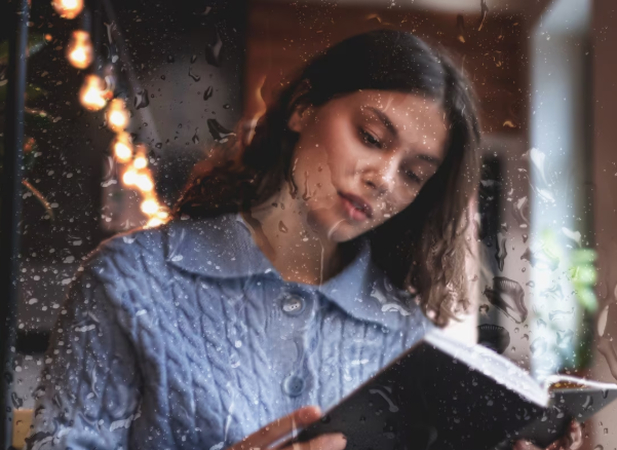
Bokeh with Raindrops
The rain bokeh will be gorgeous when taken through a fast lens (f/1.4 or f/1.8) and using a backlight source.
Raindrop Textures on Glass
Take photographs through the car windows or home windows to enjoy intimate rainy shots.
Slow Shutter + Flash Technique
Catching rain in a flash burst- great dramatic freeze and blur effects.
Post-Processing Rain Photos
Enhancing Mood and Color
Enhance rich colors to make the vibrancy higher and the contrasts. Split toning can be used to warm or cool.
Clarity, Texture, and Sharpness
Use tools like HitPaw FotorPea Photo Enhancer to sharpen raindrops and textures without over-processing.
Removing Water Spots
Use of the Clone Stamp tool or spot removal function in HitPaw FotorPea Photo Enhancer aids in cleaning unwanted blemishes. These are essential steps in editing rain photos in HitPaw FotorPea effectively.
Real-World Rain Photography Examples
Urban Rain Street Shot
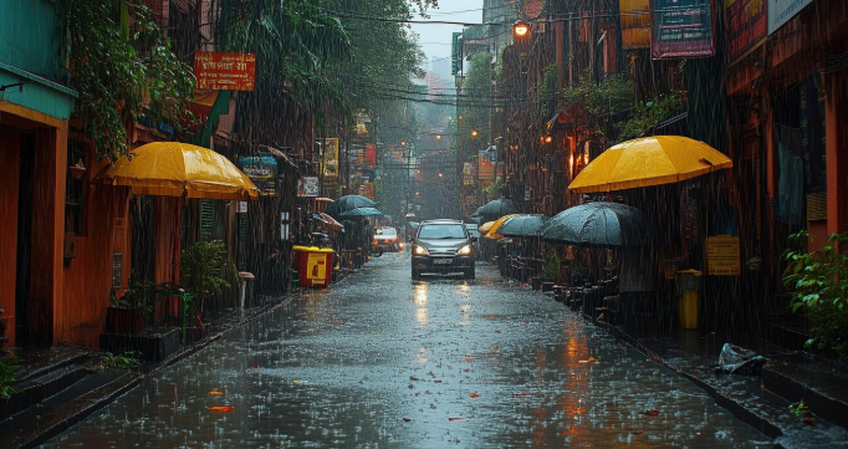
Record the chaos of evening traffic, the light of headlights that is out of focus, and the glimmering crossing lines.
Romantic Rain Portrait
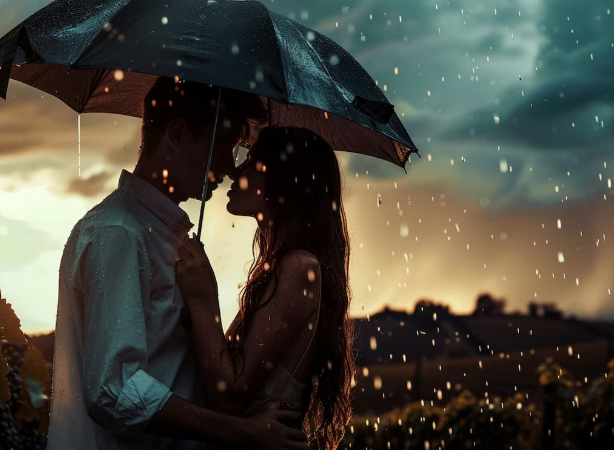
Memorable shots include soft terms, umbrellas, and golden backlight.
Landscape in Stormy Weather
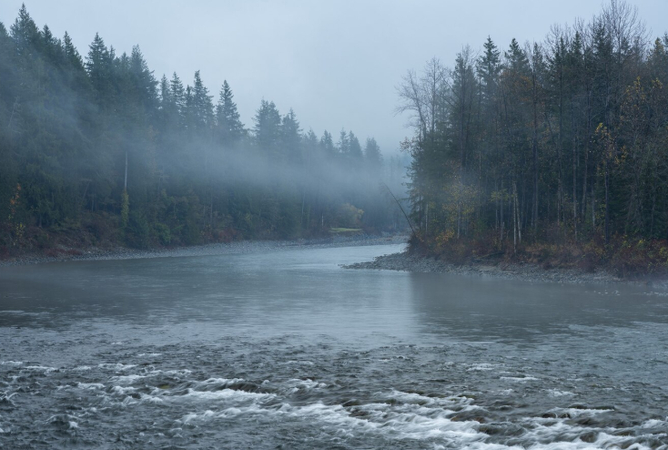
Rain mist in the background creates cinematic depth to the scene: a dark, cloud-laden mountain scene.
Final Thoughts
Shooting in the rain is both patience and preparation driven, yet has unthinkable creative possibilities. Whether you're learning how to shoot in the rain with a DSLR or pushing your style further, the rain teaches you to see beauty in chaos.
And once you've captured that perfect shot, enhance it with HitPaw FotorPea Photo Enhancer-bringing out texture, clarity, and drama that your lens worked so hard to freeze.
FAQs
Q1. Can I use a regular camera in the rain?
A1. Yes, even non-weather-sealed cameras can withstand light rainfall when the gear they use (e.g., protective covers, quick-drying equipment) facilitates such capabilities.
Q2. How do I protect my lens from raindrops?
A2. Make use of a lens hood, UV filter, and rain sleeve. Also, bring micro-fiber cloths to clean tenderly when necessary.
Q3. What's the best time of day to take rain photos?
A3. In the rain, golden hour produces warm and dramatic lighting. There is bokeh and reflection at night.
Q4. Can smartphones be used for rain photography?
A4. That is right, but only in case your phone is water-resistant. Use protective cases and experiment with rain photography camera settings on manual apps.


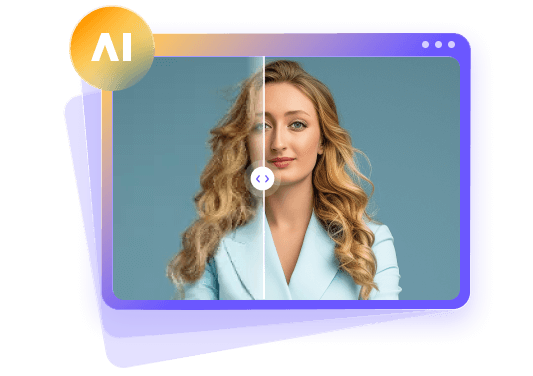




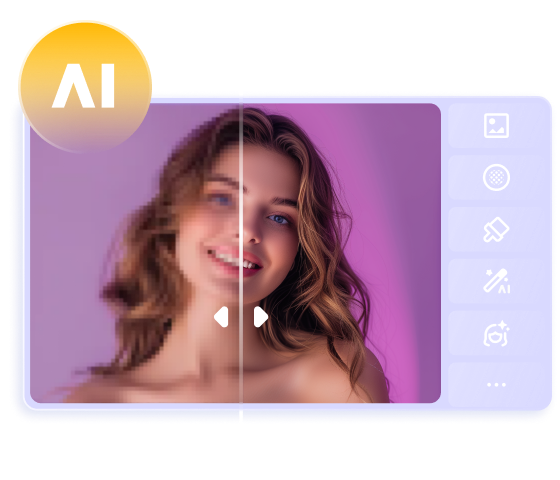
 HitPaw Univd (Video Converter)
HitPaw Univd (Video Converter) HitPaw VoicePea
HitPaw VoicePea  HitPaw VikPea (Video Enhancer)
HitPaw VikPea (Video Enhancer)
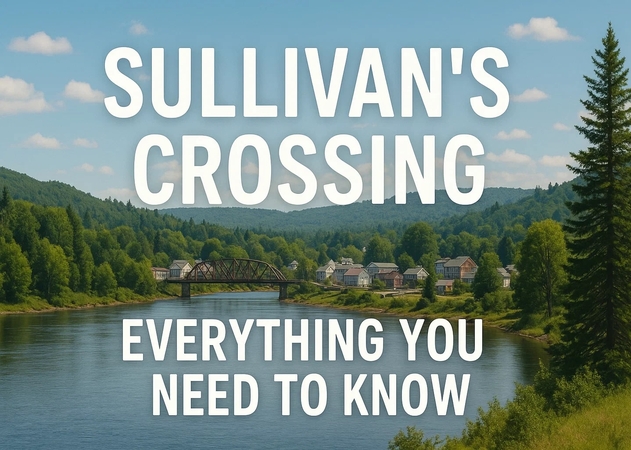


Share this article:
Select the product rating:
Daniel Walker
Editor-in-Chief
This post was written by Editor Daniel Walker whose passion lies in bridging the gap between cutting-edge technology and everyday creativity. The content he created inspires the audience to embrace digital tools confidently.
View all ArticlesLeave a Comment
Create your review for HitPaw articles